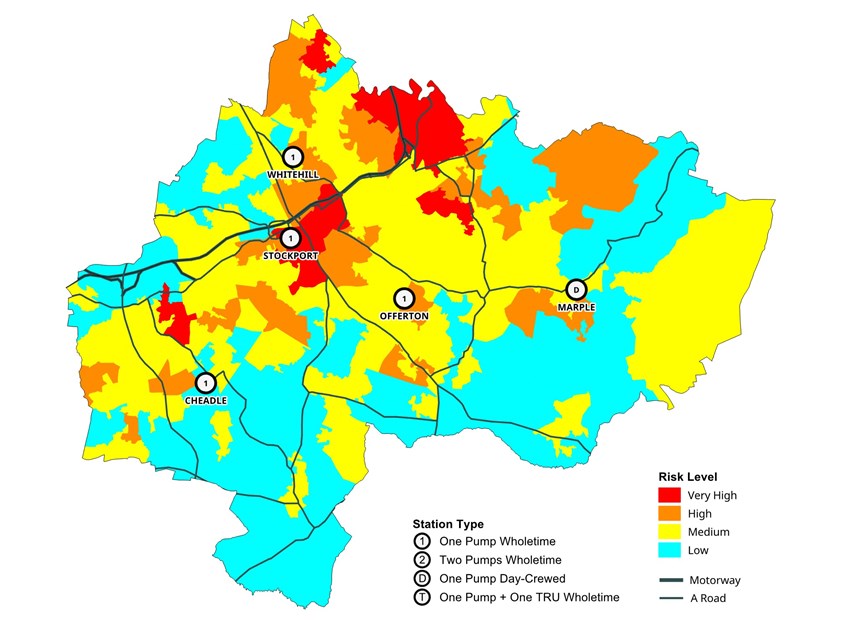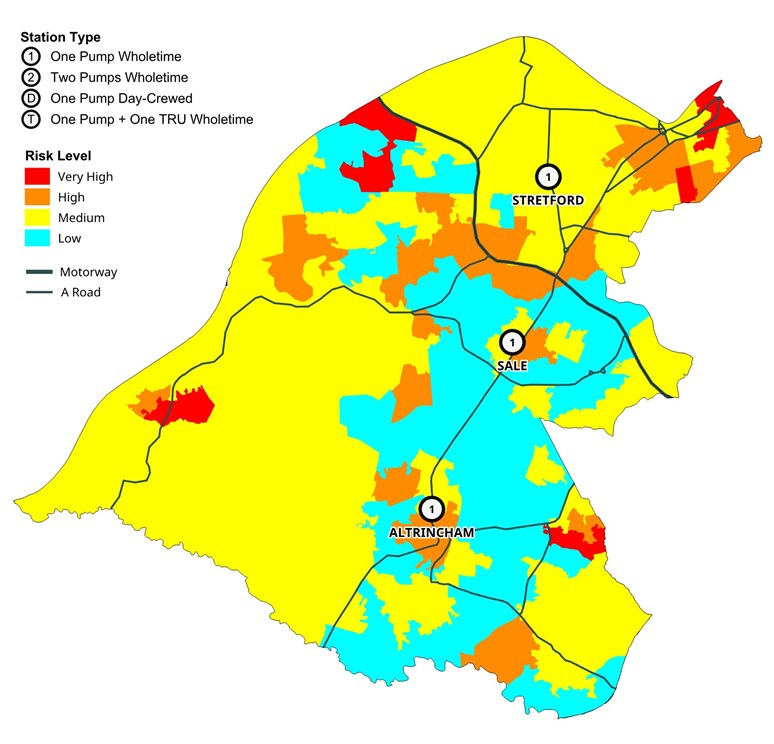
Introducing two additional ‘day crewing’ fire stations
What are we proposing?
We are proposing to move two of our ‘wholetime’ fire stations – Offerton in Stockport and Sale in Trafford – to a ‘day crewing’ model. ‘Day crewing’ means that crews provide an immediate response during station hours (8.30am to 6pm) as in our ‘wholetime’ stations, and up to a four-minute response from their nearby homes during on-call hours (6pm to 8.30am). At weekends, crews on ‘day-crewed’ stations work a usual working day with a start time of 8.30am. However, where all essential work has been completed, staff may be released from the station at 1pm and complete the remainder of their shift ‘on-call’.
For the on-call period, crews are alerted to an incident via a mobile phone and make their way to the fire station before turning out to the incident.
Why are we proposing this?
When determining which stations to propose to change to this model, we consider both the volume of incidents and the level of risk across the affected area. We also focus on night-time incidents during the hours when fire cover is proposed to be changed.
Offerton
- Offerton has low incident levels, with the second-lowest number of night-time life risk incidents (104 – less than one per week) and the second-lowest total incidents at night-time (702 – less than one per day) in the last three years.
- Moving Offerton to a day crewing station would increase average response times locally by 1 minute 26 seconds (from 6 minutes 41 seconds to 8 minutes 7 seconds) and the overall increase across Stockport borough would be 15 seconds (from 7 minutes 22 seconds to 7 minutes 37 seconds.)
- Stockport’s four other fire stations will continue to operate as they do now, including Marple which already uses day-crewing.
- Plans to build a new multi-million pound fire station at King Street in the borough, which are currently under consultation, would not be affected.
The map below shows the risk modelling and current crewing systems for Stockport.
Sale
- Sale has low incident levels, with the third-lowest number of night-time life risk incidents (146 – less than 1 per week) and the third-lowest total incidents at night-time (898 – less than 2 per day) in the last three years.
- The average response time would increase in this areas by 1 minute 10 seconds (from 7 minutes 45 seconds to 8 minutes 55 seconds) with the overall response time across Trafford borough increasing by 20 seconds (from 7 minutes 43 seconds to 8 minutes 3 seconds).
- Trafford’s two other fire stations will continue to operate as wholetime stations.
The map below shows the risk modelling and current crewing systems for Trafford.
These changes would release around £1.134 million that would be reinvested in other priority areas such as prevention, protection and people services, and in frontline fire engines in other locations. This is because the day crewing model reduces the number of staff needed at each station by 15 (from 28 to 13), therefore releasing a total of 30 posts across both stations. The changes also mean that performance at both stations would still be within our 10-minute planning standard.

